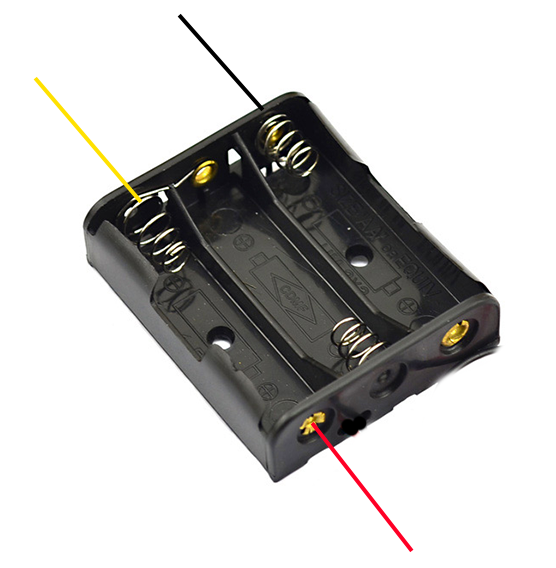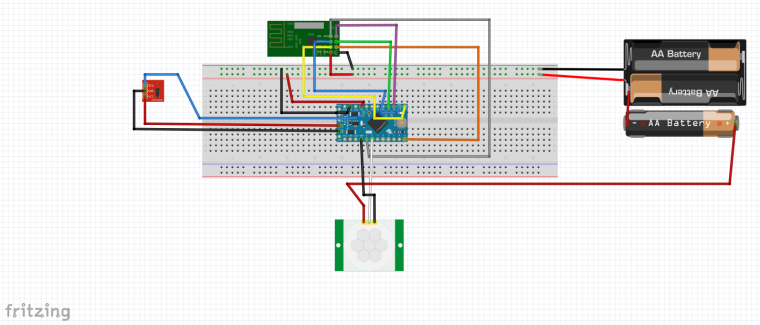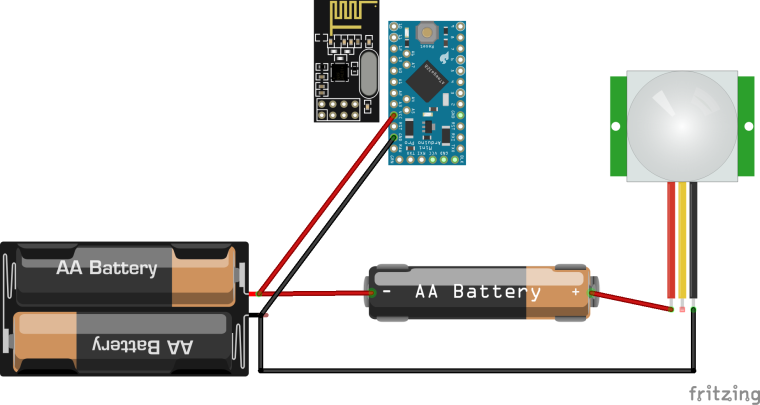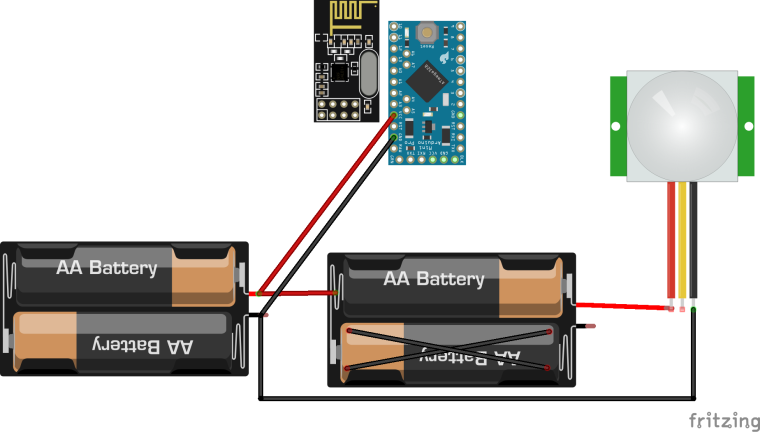HC-SR501 3.3V randomly sends tripped when radio is on
-
@Yveaux
So what would you suggest? Adding a third AA-battery?
I just can't understand why some people got this pir sensor working on 2 AA batteries and without false triggers.@burningstone pure luck? It's all about tolerances. Let's see if it still works for them once the environment temperature changes, the pir ages, the battery levels drop, the radio sends more data, etc, etc.
A simple fix is to power the pir from 3xAA and the arduino and radio from only 2xAA.
Search the forum, I've already explained it in another thread. -
@Yveaux
So i would need 5 batteries in total??
Seems like overkill to me, and the sensor would become quite big :( -
@Yveaux
So i would need 5 batteries in total??
Seems like overkill to me, and the sensor would become quite big :( -
@Yveaux
I found your other post here in the forum regarding the 3AAA batteries. Could you please explain how I do this?
Do I need to buy a battery pack for 3 batteries or is it possible do modify the battery pack I already have?
Sorry for bothering you with this type of questions, I just recently started with this. -
@burningstone no, just 3xAA.
Power the arduino and radio from the first 2 only.@burningstone Here's a schematic representation of what I mean:

The red wire w.r.t. ground (black wire) will supply max. 4.5V (3xAA), the yellow one w.r.t ground will supply max. 3V.
The load of the Arduino and nRF24 are small, so all batteries will more or less drain equally fast.It can easily be implemented by soldering an extra wire (the yellow one) to a 3xAA battery holder:

Try it, and verify the output voltages with a DMM!
-
@Yveaux
Thank you very much.
I'll order a battery pack for 3 batteries, currently I have only a pack for 2 batteries.How long does it take approximately till the batteries are empty? I know that it depends on how frequent the sensor gets triggered, but maybe you can tell me some average values.
-
@Yveaux
Thank you very much.
I'll order a battery pack for 3 batteries, currently I have only a pack for 2 batteries.How long does it take approximately till the batteries are empty? I know that it depends on how frequent the sensor gets triggered, but maybe you can tell me some average values.
-
@Yveaux
That sounds like exactly what I want :)Would it be possible to add a dht22 or would this interfere with the pir?
-
@Yveaux
Thank you very much.
I'll order a battery pack for 3 batteries, currently I have only a pack for 2 batteries.How long does it take approximately till the batteries are empty? I know that it depends on how frequent the sensor gets triggered, but maybe you can tell me some average values.
-
@mfalkvidd
Awesome! How do i connect the wires to the battery? Solder them or what? -
@mfalkvidd
Awesome! How do i connect the wires to the battery? Solder them or what? -
@mfalkvidd
And how can i tape the wire on the side of the battery holder? My battery holder package already has two wires connected like in the fritzing pictures. -
@mfalkvidd
And how can i tape the wire on the side of the battery holder? My battery holder package already has two wires connected like in the fritzing pictures. -
@burningstone tape a wire directly on the battery, or solder to the battery or the holder.
Look what you have lying around and be creative!
That's what MySensors is about!@Yveaux
Sorry I have been a long time away due to exams.
Now I finally have time to spend for mysensors :)I tried your approach with the three batteries. My setup looks like this:

I modified the HC-SR501 as shown below:

The sketch is pretty simple, it sends the motion and the light level and then goes to sleep with interrupt for 30 minutes. I still get the false positives whenever the arduino doesn't wake up from intrerrupt.
What am I doing wrong?
-
@Yveaux
Sorry I have been a long time away due to exams.
Now I finally have time to spend for mysensors :)I tried your approach with the three batteries. My setup looks like this:

I modified the HC-SR501 as shown below:

The sketch is pretty simple, it sends the motion and the light level and then goes to sleep with interrupt for 30 minutes. I still get the false positives whenever the arduino doesn't wake up from intrerrupt.
What am I doing wrong?
-
@Yveaux
Sorry I have been a long time away due to exams.
Now I finally have time to spend for mysensors :)I tried your approach with the three batteries. My setup looks like this:

I modified the HC-SR501 as shown below:

The sketch is pretty simple, it sends the motion and the light level and then goes to sleep with interrupt for 30 minutes. I still get the false positives whenever the arduino doesn't wake up from intrerrupt.
What am I doing wrong?
@burningstone You probably want to find the root cause to this but, as a quick fix, have you tried software-blocking the false trip with an additional sleep before the interrupt-activating sleep? Something like
sleep(3000);before the lastsleep(...). I do it with success for my mini-pirs. -
@Yveaux @gohan
I updated the library to 2.2 and I put a 47uf cap between ground and vcc of the pir (hope that's what you mean't) and now it works.Thanks for your help!
I soldered now everything onto a pcb and now the pir doesn't work. I feel like giving up, didn't think that it would be that hard for me to build one stable node. I spent almost 2 hours soldering and assembling and now it doesn't work :(
-
@burningstone You probably want to find the root cause to this but, as a quick fix, have you tried software-blocking the false trip with an additional sleep before the interrupt-activating sleep? Something like
sleep(3000);before the lastsleep(...). I do it with success for my mini-pirs.


